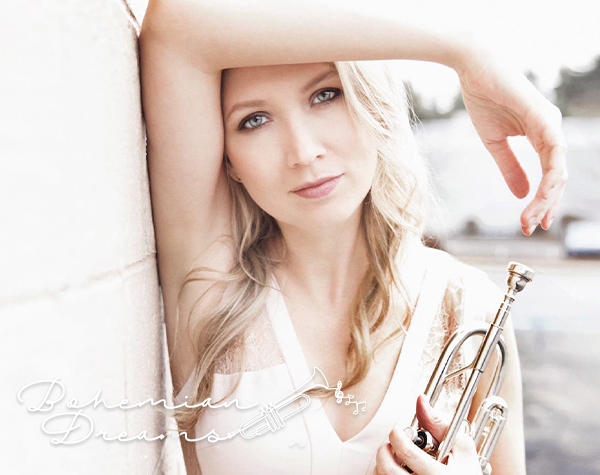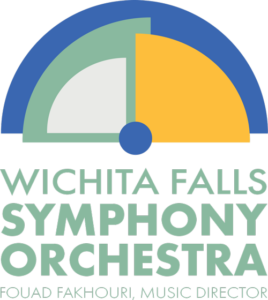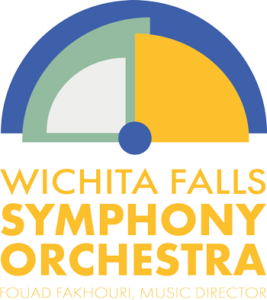Program Notes – January 20, 2024
Written by Todd Giles
Gioachino Rossini: William Tell Overture (1829)
While most of us likely haven’t read Fredrich von Shiller’s 1804 play that inspired Gioachino Rossini’s (1792–1868) William Tell, it is likely that we grew up hearing the basic story of the marksman father forced to shoot an apple off his son’s head. More likely still, we have heard the iconic finale of Rossini’s William Tell Overture as the theme of The Lone Ranger or in countless cartoons or commercials over the years. Rossini wrote this, his thirty-ninth and final opera, while living in France. His second opera written in French premiered in 1829 at the Paris Opera. With this, the thirty-seven-year-old composer shocked the opera world by retiring from penning operas altogether at the height of his career.
The twelve-minute overture was written in four parts, almost like a miniature symphony, but with no breaks between the work’s distinct “movements.” Rossini’s late operatic masterpiece pulls out all the stops, painting a vivid picture of life in the French Alps with its dramatic ballet scenes, patriotic choruses, depictions of revolution, and extraordinary scenery. “Prelude: Dawn” opens the overture with five solo cellos, accompanied by the basses and double basses, getting us ready for the impending storm brewing in the mountains, as hinted at with two soft timpani rolls. “Storm” commences with the violins and violas, which are joined by the full orchestra. The calm after the storm comes with the brief pastoral “Call of the Cows,” which is followed by the work’s famous galloping finale, “March of the Swiss Soldiers.”
Clarice Assad: Bohemian Queen: Concerto for Trumpet and String Orchestra (2022)
Clarice Assad (b. 1978) is a Brazilian-American composer, educator, pianist, and singer from Rio De Janeiro whose work melds diverse cultures and musical genres, including jazz, classical, and world music, with particular attention to that of her native Brazil. She has composed for solo piano and guitar, chamber ensemble, and written concertos for violin, percussion, and even one for scat singing and piano. Assad’s most recent concerto, which she wrote for trumpeter Mary Elizabeth Bowden, is titled Bohemian Queen. Co-commissioned by a consortium of ten orchestras around the country, including the WFSO, Bohemian Queen was premiered by Bowden and the Chicago Youth Symphony Orchestra in November of last year.
The concerto was inspired by the Chicago-based surrealist artist Gertrude Abercrombie (1909–1977), who was known as “the queen of bohemian artists.” According to the composer’s program notes, Abercrombie “was profoundly in the jazz scene and friends with no less than musicians such as Dizzy Gillespie, Charlie Parker, and Sarah Vaughan. . . .” The first two movements of the concerto are named after two of Abercrombie’s paintings: Girl Searching (1945) and The Stroll (1943). The third movement, titled “Hyde Park Jam,” is, according to Assad, “an imaginary depiction of her memorable parties where she used to sit in as a pianist herself and play with jazz’s greatest masters.” One of the things Assad finds interesting about Abercrombie is that as a white woman, she broke both racial and gender barriers as an active participant of the Chicago jazz scene.
Alexander Arutiunian: Trumpet Concerto in A-flat Major (1950)
Alexander Arutiunian (1920–2012) was an Armenian pianist and composer who infused musical elements from his homeland with that of Russian music, like his predecessor, Aram Khachaturian. Following the Second World War, Arutiunian studied composition at the House of Armenian Culture in Moscow, returning to Armenia to direct the Royal Philharmonic Society and later the Armenian Philharmonic Orchestra. Upon its completion in 1950, the Trumpet Concerto was heralded as a virtuosic showpiece, quickly finding its way into the international trumpet repertoire, where it still plays a major role today.
Like many composers in the late 19th and early 20th centuries, Arutiunian turned to his national folk traditions for inspiration. While he did not quote directly from Armenian folk songs in this concerto, he did incorporate folk minstrel improvisations, providing the Trumpet Concerto with challenging passages for the trumpet, which always remains front and center throughout the work, along with melodies reminiscent of Gypsy, Russian and Armenian music. The brief concerto, which lasts just seventeen minutes, was written in seven distinct parts with no pauses between them, similar to Rossini’s William Tell Overture and the final three movements of Shostakovich’s Symphony No. 9, also on tonight’s program.
Dmitri Shostakovich: Symphony #9 in F-flat Major, Op. 70 (1945)
Composed five years before Alexander Arutiunian’s Trumpet Concerto, the neoclassical Symphony No. 9 of Dimitri Shostakovich (1906–1975) befuddled audiences and critics alike; even worse, it ignited Joseph Stalin’s wrath. Coming on the heels of his Symphony No. 8, which was written during the height of World War II, everyone was expecting another large, psychologically-wrought work—one that celebrated the end of the war and highlighted Russia’s long-fought victory. There too, there was the specter of Beethoven’s victorious Ninth Symphony lurking in the background to contend with. Everyone, especially Stalin, expected an ode to Russia’s greatness (and that of Stalin himself). It did not help that Shostakovich made public statements that his symphony would use “not only the orchestra, but also a chorus as well as soloists.” Instead, what audiences heard was a rather quirky parody of the Classical style. To add insult to injury coming off his sixty-plus minute Seventh and Eighth symphonies, the twenty-plus minute Ninth was Shostakovich’s briefest symphony since his Second, written eighteen years earlier. In short, it was everything but what was expected of Stalin era composers and artists—propaganda.
Even though the symphony was not “dangerous,” as Stalin had labeled the composer’s 1934 opera Lady Macbeth of Mtsensk, he nonetheless officially censured not only Shostakovich, but also those other “decadent formalists,” Khachaturian and Prokofiev, because the former failed to live up to expectations that the Ninth come full-circle by boldly and nationalistically concluding the previous two war-inspired symphonic chapters. Fat chance, sayeth Shostakovich, who had a history of musically thumbing his nose at the Stalinist regime. Afterall, composing a grandiose victory symphony would have been a betrayal of his moral compass. Perhaps that is why Khachaturian called him the “conscience of Soviet Music.”
According to Solomon Volkov’s Testimony, Shostakovich said, “They wanted a fanfare from me, an ode, a majestic Ninth. . . . I doubt Stalin ever questioned his own genius or greatness. But when the war against Hitler was won, he went off the deep end, like a frog puffing himself up to the size of an ox, and now I was supposed to write an apotheosis to Stalin. I simply could not.” Shostakovich was officially on the outs for the second time, not a good place to be in Stalinist Russia. The censure cost him not only his professorship at the Moscow Conservatory, it also kept him, out of fear, from writing his next symphony until the year Stalin died. Until that time, Shostakovich had to play his cards close to his vest and rely on writing film scores for income.
Shostakovich’s style throughout his composing career—which included fifteen symphonies and fifteen string quartets—featured dissonant harmonies and rapid changes in emotional extremes, but it also embraced folk tunes, melody, and tonality. That is, he at one and the same time nudged the envelope forward, but never became too experimental or inaccessible. While he also composed for piano, chamber ensemble, ballet, and the theatre, his greatest impact were his symphonies, which are believed to be the single most important contribution to the genre by any composer born in the 20th century.
Similar to Prokofiev’s Classical Symphony, written in the midst of the pervious world war (1916-17), Shostakovich’s Ninth is a compact throw-back to the likes of Mozart and Haydn. However, unlike the ebullience presented by Prokofiev, the Ninth paints a more emotionally complex picture. According to the conductor who premiered the work in Leningrad, Yevgeny Mravinsky, the symphony “scoffs at complacency, pompousness, and desire to rest on one’s laurels, and sing one’s own praises.” Mravinsky also found that the work “has a genuine lyricism and profound sorrow.”
As the first movement opens, we are immediately dispelled from making any connections back to his previous symphony—or Beethoven’s Ninth for that matter—due to the spiritedness of the violins. Enter the snare drum, and a somewhat obnoxious trombone that likes to interrupt the movement’s main theme played on the piccolo. The second movement, which is more melancholy, begins with a smooth clarinet solo that is joined by the woodwinds one by one. As they in turn drop out individually, the strings enter with a swaying line. These two ideas alternate throughout the movement, which ends with a piccolo solo that fades away.
The last three movements are played without pause. “Presto” moves along quickly with a trumpet solo in the middle before the movement, like the previous one, fades away into the next, which begins with the loud brass sounds of the trombones and tuba. Here too, Shostakovich provides a second voice to alternate with the brass—two bassoon solos. With the last note of the fourth movement, the finale opens almost clownishly. “Allegretto” brings us back to the melody from the first movement of the symphony, where the woodwinds engage in conversation with the strings as the tempo accelerates faster and louder with the whole orchestra involved in what sounds like an over-exaggerated vaudevillian march.





